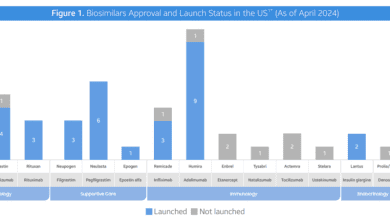How to set an HR Budget for Small Businesses
If you’re a small business setting up an HR budget, you probably have quite a few questions. Many business owners handle this on their own without an HR background. We’re here to help! Discover the essential steps to effectively plan and manage your HR budget for small businesses.
Understanding the Importance of HR Budget Planning
Effective HR budget planning is crucial for small businesses setting up their first HR department as it helps in allocating resources efficiently and strategically. By understanding the importance of HR budget planning, businesses can ensure that they have the necessary funds to recruit and retain talented employees, develop training programs, and implement HR strategies that align with their overall business goals.
HR budget planning also enables businesses to anticipate and address potential financial challenges related to human resources, such as salary increases, benefits, and compliance costs. It allows businesses to have a clear overview of their HR expenses and make informed decisions regarding resource allocation.
Moreover, HR budget planning provides a framework for evaluating the return on investment (ROI) of HR initiatives. By tracking and analyzing the financial impact of HR activities, businesses can identify areas of improvement and optimize their HR budget for maximum efficiency and effectiveness.
Overall, understanding the importance of HR budget planning is essential for small businesses to effectively manage their human resources and drive business success.
Identifying Key Components of an HR Budget
When creating an HR budget for a small business, it is important to identify and include key components that accurately reflect the organization’s HR needs and goals. Some key components to consider are:
– Employee salaries and benefits: This includes wages, salaries, bonuses, overtime pay, and benefits such as group health insurance, Health Reimbursement Arrangements, retirement plans, and paid time off.
– Recruitment and onboarding costs: This includes expenses related to advertising job openings, conducting interviews, conducting background checks, and providing training for new hires.
– Training and development: This includes costs associated with employee training programs, professional development courses, workshops, and conferences.
– HR software and technology: This includes expenses for HR management systems, payroll software, HRA administration software, time tracking tools, and other technologies that streamline HR processes.
– Compliance and legal expenses: This includes costs related to ensuring compliance with labor laws, regulations, and legal requirements, such as employee contracts and documentation.
By identifying these key components, businesses can create a comprehensive HR budget that covers all necessary aspects of human resource management.
Creating a Realistic HR Budget for Small Businesses
Creating a realistic HR budget for small businesses requires careful analysis and consideration of various factors. Here are some steps to follow:
1. Assess current HR needs: Evaluate the current HR needs of your business, including the number of employees, their roles, and the HR services required to support them. This will help you determine the baseline HR budget.
2. Set HR goals and priorities: Define your HR goals and priorities, such as improving employee retention, enhancing training programs, or implementing HR technology. Align your budget with these goals to ensure proper allocation of resources.
3. Estimate costs: Estimate the costs associated with each HR component identified earlier. Consider factors such as salary increases, benefit changes, training expenses, and compliance requirements. Use historical data and industry benchmarks to make accurate estimates.
4. Consider future growth: Anticipate future growth and expansion plans when creating your HR budget. Account for potential increases in workforce size, new HR initiatives, and the corresponding financial implications.
5. Review and adjust: Regularly review and adjust your HR budget to reflect any changes in business priorities, HR needs, or market conditions. This will help you maintain a realistic and flexible budget that aligns with your business objectives.
By following these steps, small businesses can create a realistic HR budget that supports their HR goals and ensures effective management of human resources.
Implementing Strategies to Monitor and Adjust the HR Budget
Monitoring and adjusting the HR budget is vital for small businesses to ensure financial control and optimize resource allocation. Here are some strategies to consider:
1. Regular financial reviews: Conduct regular financial reviews to track HR expenses and compare them against the budget. Identify any discrepancies and take corrective actions.
2. Key performance indicators (KPIs): Define and monitor relevant HR KPIs to measure the effectiveness of HR initiatives and their impact on business outcomes. Use these KPIs to assess the ROI of HR activities and make data-driven budget adjustments.
3. Flexibility and contingency planning: Build flexibility and contingency plans into your HR budget to account for unexpected changes or emergencies. Allocate a portion of the budget for unforeseen HR expenses that may arise throughout the year.
4. Collaborate with HR stakeholders: Involve HR stakeholders, such as managers and employees, in the budget monitoring and adjustment process. Seek their input and feedback to ensure alignment between HR initiatives and budget allocation.
5. Continuous improvement: Continuously evaluate and improve your HR budgeting process. Learn from past experiences, analyze the effectiveness of budget allocations, and make necessary adjustments to optimize resource utilization.
By implementing these strategies, small businesses can effectively monitor and adjust their HR budget to ensure financial control and maximize the impact of HR initiatives.
Maximizing the Impact of Your HR Budget on Business Growth
To maximize the impact of your HR budget on business growth, consider the following approaches:
1. Strategic workforce planning: Align your HR budget with strategic workforce planning to ensure that you have the right talent in the right positions. Identify future talent needs and invest in recruitment, training, and development programs accordingly.
2. Performance management: Implement effective performance management systems to track employee performance and identify areas for improvement. Allocate budget for performance incentives, rewards, and recognition programs that motivate and engage employees.
3. Employee development and engagement: Allocate resources to employee development and engagement initiatives, such as training programs, career development opportunities, and employee wellness initiatives. These investments can enhance employee satisfaction, productivity, and retention.
4. HR technology investments: Consider investing in HR technologies that streamline HR processes, automate administrative tasks, and enable data-driven decision-making. Allocate budget for HR software, employee self-service portals, and analytics tools that can enhance HR efficiency and effectiveness.
5. Measure and communicate ROI: Regularly measure and communicate the ROI of your HR initiatives to demonstrate the value they bring to the business. Use metrics such as employee turnover, productivity improvements, and cost savings to highlight the impact of your HR budget on business growth.
By adopting these approaches, small businesses can leverage their HR budget to drive business growth, attract top talent, and create a positive work environment.
Looking for more? Check out our Employee Benefits Guide.



